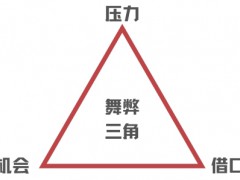???? 據(jù)能源世界網(wǎng)1月28日新德里報(bào)道,印度正在探索在俄羅斯北極地區(qū)化石燃料和能源部門其他領(lǐng)域進(jìn)行重大投資的可能性,這是可再生能源和不可再生能源的新全球來(lái)源。
????據(jù)知情人士透露,印度目前在俄羅斯的石油和天然氣項(xiàng)目投資達(dá)150億美元,其正在擴(kuò)大在俄羅斯國(guó)家石油公司Rosneft在北極開發(fā)的新石油項(xiàng)目中的業(yè)務(wù)。
????印度駐莫斯科大使最近在俄羅斯首都為當(dāng)?shù)孛襟w舉行的簡(jiǎn)報(bào)會(huì)上暗示,印度在北極地區(qū)的利益日益增長(zhǎng)。
????印度駐莫斯科大使最近在俄羅斯首都為當(dāng)?shù)孛襟w舉行的簡(jiǎn)報(bào)會(huì)上暗示,印度在北極地區(qū)日益增長(zhǎng)的利益。
????據(jù)消息人士表示,雙方目前正在就這個(gè)問題進(jìn)行討論。印度最近發(fā)布的北極政策草案暗示,印度在俄羅斯北極地區(qū)的影響力將不斷增加。該國(guó)表示,該地區(qū)蘊(yùn)藏著“礦藏-銅、磷、鈮、鉑族元素和稀土”。
????印度還正在探索利用來(lái)自俄羅斯和其他國(guó)家/地區(qū)管轄的北極地區(qū)的可再生能源的方法,這些可再生能源包括水電,生物能源,風(fēng)電,太陽(yáng)能,地?zé)崮芎秃Q竽堋?/p>
????冰島前總統(tǒng)奧拉夫·拉格納·格里姆松(Olafur Ragnar Grimsson)去年在一次演講中說(shuō),印度對(duì)北極“遙遠(yuǎn)的地方”的興趣是合理的,因?yàn)椤坝《鹊奈磥?lái)在很大程度上將由北極決定,北極的未來(lái)也將由印度和其他亞洲國(guó)家的情況決定”。
????他指出北極地區(qū)“能源和海洋資源極其豐富”,他說(shuō)“現(xiàn)在俄羅斯出口收入的20%以上來(lái)自俄羅斯北極地區(qū)”。
????俄羅斯最近不僅建立了北極部,而且還建立了遠(yuǎn)東和北極的聯(lián)合部委。有從俄羅斯到歐洲的天然氣管道,但最近已修建了一條從俄羅斯北極地區(qū)一直到亞洲的8,500公里的管道。
????印度的政策草案強(qiáng)調(diào),北極地區(qū)的無(wú)冰條件導(dǎo)致了新航運(yùn)路線的開通,從而降低了成本,重塑了全球貿(mào)易。其表示,印度尋求參與環(huán)境監(jiān)測(cè)研究,以評(píng)估未來(lái)可能穿越這條航線的船舶的預(yù)計(jì)排放量。
????據(jù)知情人士透露,印度希望使用北海航線(俄羅斯北極地區(qū)的主要海路進(jìn)行運(yùn)輸),這將減少在印度太平洋地區(qū)運(yùn)輸貨物所需的時(shí)間。
????俄羅斯運(yùn)輸部預(yù)測(cè),北海路線的貨物周轉(zhuǎn)量將大大增加。這條路線橫跨北冰洋(卡拉、拉普特夫、東西伯利亞和楚科特卡)和部分太平洋(白令海)。從卡拉門到普羅維登斯灣的北海航線長(zhǎng)約5,600公里。圣彼得堡到北海沿線符拉迪沃斯托克的距離超過14,000公里,而蘇伊士運(yùn)河覆蓋的距離超過23,000公里。
????俄羅斯正在尋求在西伯利亞開發(fā)大型Vostok石油項(xiàng)目,其中包括Vankor和Payakha群集,其資源量估計(jì)為440億桶。該項(xiàng)目位于俄羅斯的遙遠(yuǎn)北部,包括Vankor群集、Zapadno-irkinsky區(qū)塊、Payakhskaya油田群和東泰米爾群集。所有這些集群都靠近Rosneft想要用來(lái)將石油運(yùn)往歐洲和亞洲的北海航線。
????同時(shí),印度和俄羅斯正在加快恢復(fù)欽奈-符拉迪沃斯托克航運(yùn)聯(lián)系,作為他們?cè)谟√貐^(qū)的伙伴關(guān)系的一部分。
????郝芬 譯自 能源世界網(wǎng)
????原文如下:
????India explores major investments in hydrocarbons & renewables in Russian Arctic region
????India is exploring the possibility of major investments in fossil fuels and other areas of the energy sector in Russia’s Arctic region, which is a new global source for both renewables and non-renewables.
????India’s current investment in Russia stands at $15 billion in oil and gas projects and it is looking to expand its presence in the new oil project being developed by the Russian national oil company Rosneft in the Arctic, according to people aware of the matter.
????The Indian Ambassador to Moscow hinted in a recent briefing for local media in the Russian capital at India’s growing interests in the Arctic region.
????The two sides are currently holding discussions on the issue, said the people. India’s recently released draft Arctic policy hinted at increasing presence in Russia’s Arctic region. It said the region contains reserves of “mineral deposits – copper, phosphorus, niobium, platinum-group elements and rare earth”.
????India is also exploring ways to harness renewables – hydroelectricity, bioenergy, wind power, solar, geothermal, and ocean energy – from Arctic regions under the jurisdiction of Russia and other countries.
????Former president of Iceland, Olafur Ragnar Grimsson, had said in a lecture last year that India’s interest in a “faraway place”, the Arctic, was justified because “the future of India, will be, to a large extent, determined by the Arctic and the future of the Arctic will also be determined by what takes place in India and other Asian countries”.
????Pointing out that the Arctic is “extraordinarily rich in energy resources and ocean resources”, he had said that “over 20% of Russian exports earning now come from the Russian Arctic”.
????Russia recently put in place a ministry not just of the Arctic but the combined ministry of the Far East and the Arctic. There are gas pipelines from Russia to Europe but recently an 8,500-kilometre pipeline has been constructed from the Russian Arctic all the way down to Asia.
????India’s draft policy highlighted that ice-free conditions in the Arctic were resulting in the opening of new shipping routes, thereby lowering costs and reshaping global trade. It said India seeks to participate in the environmental monitoring study to evaluate the predicted emissions of ships likely to traverse this route in the future.
????India is hoping to use the Northern Sea Route – the main sea route in the Russian Arctic for transportation – which will reduce time taken for transportation of cargo in the Indo-Pacific region, said people aware of the matter.
????The Russian ministry of transport forecasts that cargo turnover along the Northern Sea Route will grow significantly. The route crosses seas of the Arctic Ocean (Kara, Laptev, East Siberian and Chukotka) and partially the Pacific Ocean (the Bering Sea). The Northern Sea Route from the Kara Gate to the Providence Bay is about 5,600 km long. The distance between St. Petersburg to Vladivostok along the Northern Sea Route is more than 14,000 km while the distance vessels have to cover by the Suez Canal is more than 23,000 km.
????Russia is looking to develop the Vostok Oil mega project in Siberia, which includes the Vankor and Payakha clusters and has resources estimated at 44 billion barrels. The project, in Russia’s Far North, includes the Vankor cluster, the Zapadno-Irkinsky block, the Payakhskaya group of fields and the East Taimyr cluster. All those clusters are close to the Northern Sea Route that Rosneft wants to use to ship oil to Europe and Asia.
????Simultaneously, India and Russia are expediting the revival of Chennai-Vladivostok shipping link as part of their partnership in the Indo-Pacific region.







